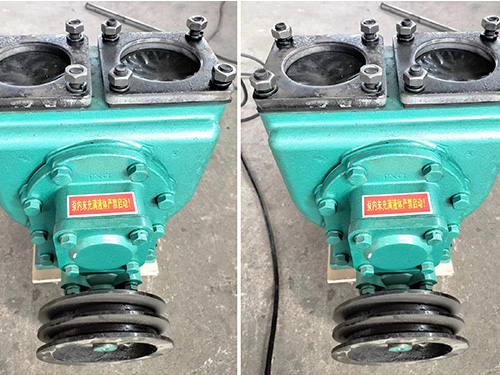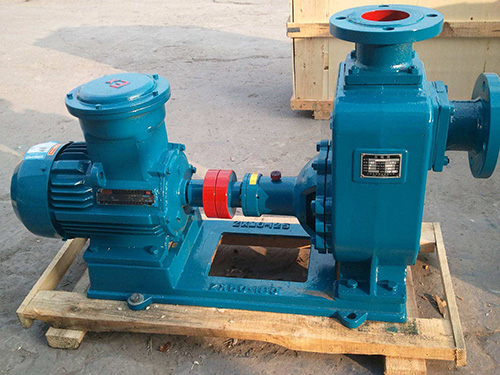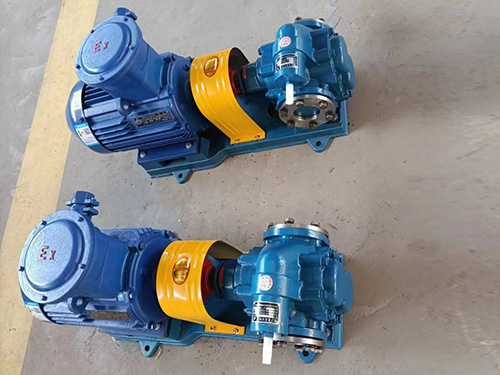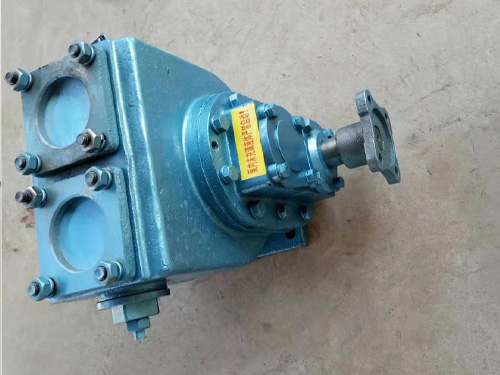Preparation work before starting the Roots oil pump and exploration of noise mechanism
2023-05-16 15:10:51
【1】 Preparation before starting the LC Roots pump
Before officially starting the Roots pump, relevant preparation work should be done first, so as to make the subsequent operation of the equipment more stable and avoid some external factors affecting the normal operation of the equipment in advance.
. Therefore, the preparation work before starting is very important and should be carried out in the correct way. Therefore, the following will explain the preparation work before starting (1) Add oil according to the instruction manual of the LC Roots pump (2) Check if the water pressure is sufficient (3) Adjust the pointer of the electric contact pressure gauge to 0.5 * 105~1.0 * 105Pa, and adjust the pointer value of each electric contact vacuum gauge according to the actual situation of the system being pumped. This value is the allowable starting and working pressure value of the LC Roots pump controlled by each gauge. The pressure value of the pump that is later started should be lower than the pressure value of the pump that was previously started (4) Rotate each pump shaft by hand without any jamming phenomenon. If the shutdown time is long, it must be stuck before starting Therefore, before starting the LC Roots pump, everyone should first handle it according to the above content, conduct inspections and trial operations on all aspects, and only officially start using the equipment after there are no problems. Of course, in order to maintain good operation of the equipment, in addition to preparing before starting, it is necessary to operate it in the correct way[2] Discussion on the Noise Mechanism of Roots Pump
Roots pump (abbreviated as Roots pump) is a rotary variable capacity vacuum pump without internal compression.
. The pumping process is shown in Figure 1, where there are two symmetrical rotors in the pump chamber, with two, three, and four blade shapes. The two rotors rotate in opposite directions to each other. Synchronous rotation driven by shaft end gears. The rotors are not in contact with each other, and there is also no contact between the rotor and the pump chamber wall. There is usually a gap of 0.15-1.0mm between them, and the pump wall is sealed by the gap. The change in clearance is usually the main cause of noise generation, and the backlash between the transmission gears is the direct cause of gearbox heating. Heating can also generate noise. The relationship between the two is inseparableThe causes and reduction measures of noise
The noise of a pump usually refers to the noise level measured during stable operation.
. It includes the noise of the pump itself and the noise of the motor. There are several possible aspects of pump noise, based on the location of the sound ① Bearing noise ② Gear noise ③ Changes in the gap between the rotor and the side cover result in noise generated by friction between the rotor and the side cover, as well as the resulting airflow noise ① In addition to the noise caused by manufacturing errors, the main noise generated by bearings and gears is actually due to the accumulation of manufacturing errors in the stator, side cover, and bearing seat of the pump. Reflected on the bearings is an increase in the coaxiality of the two end bearings Due to the parallelism error between the two end faces of the pump body, the perpendicularity error between the side cover end face and the bearing seat inner hole, the coaxiality error between the bearing seat inner hole and the outer circle, and the position error between the side cover and the stator during positioning. The final result is reflected in the accumulation of errors in the inner holes of the front and rear bearings on the bearings. The situation of the rotor shaft is that the shaft bears unbalanced force, causing distortion and deformation of the rotor shaft, rotor vibration, bearing heating, and noise. The phenomenon of double row bearings is obvious. Because single row bearings are thinner, they are not as strong as double row bearings in limiting the rotational freedom of the shaft The reason for the noise generated by gears and bearings is basically the same. But it is closely related to the manufacturing accuracy of the gear itself. Due to the coaxiality error between the outer teeth and the inner circle of the gear, when a pair of gears mesh with each other, some teeth will mesh tightly, that is, the backlash between them is too small, while the opposite part will be loose. In this situation, one of the gears can be removed, rotated 180 degrees along the rotor shaft, and then installed. The coaxiality error between the outer teeth and the inner circle of the gear can be offset, which can make the clearance between the gears even and reduce the noise during gear meshing. Reduce gear heating. But if the machining accuracy of the gear teeth themselves does not meet the requirements, this method cannot solve it. Only by improving the machining accuracy of the gears themselves is the measure to reduce the noise of Roots pumps The heat generated during the compression process of the Roots pump is transferred to the rotor and pump body. The rotor is difficult to transfer heat outside the pump, while the heat from the pump body is easily dissipated into the surrounding atmosphere. Therefore, there is a temperature difference between the rotor and the pump body. Aggravated the thermal expansion of the rotor. When the pump load increases (i.e. the pressure difference between the inlet and outlet of the pump exceeds the allowable pressure difference), the rotor expansion will disappear the gap, causing friction between the rotor and the side cover, increasing thermal expansion until it is stuck If the rotor cannot be stuck during operation, it is required to have gaps between the rotors, between the rotor and the pump chamber, and between the rotor and the end cover in the design of the profile to compensate for inaccurate manufacturing and assembly of the vacuum pump, as well as deformation caused by heat. Moreover, the rotor shape is symmetrical, with good dynamic balance performance, and can reduce vibration noise and heat generation
The YHCB high flow pump has the characteristics of large flow rate, high head, small settli...

The CYZ centrifugal pump adopts an axial return liquid pump body structure, which is compos...

Copper gear pump (KCB type) is suitable for conveying lubricating oil or other liquids with...

The car mounted circular arc gear pump can be installed on the car and driven by the output...



